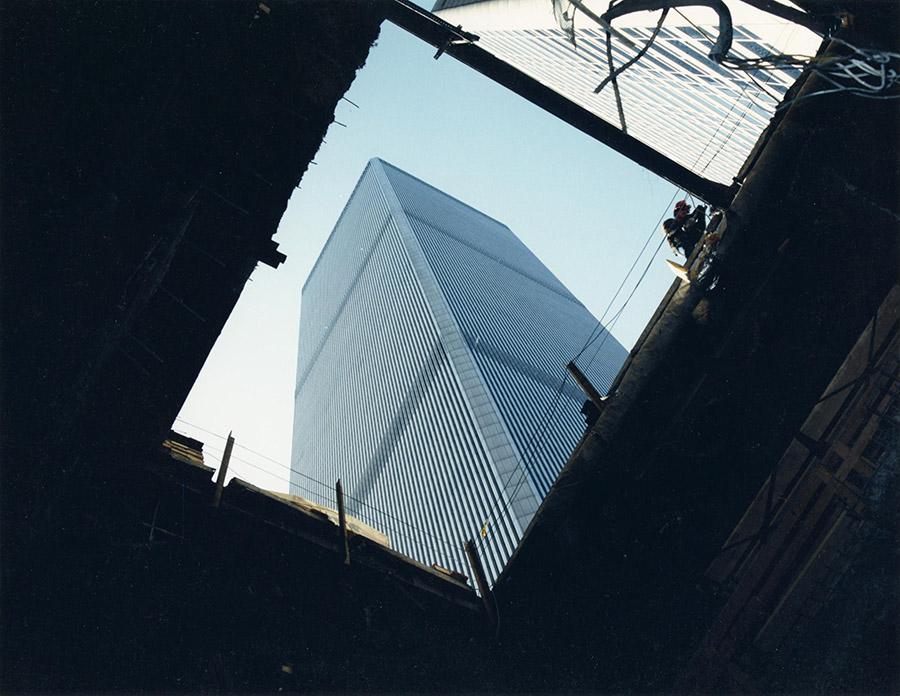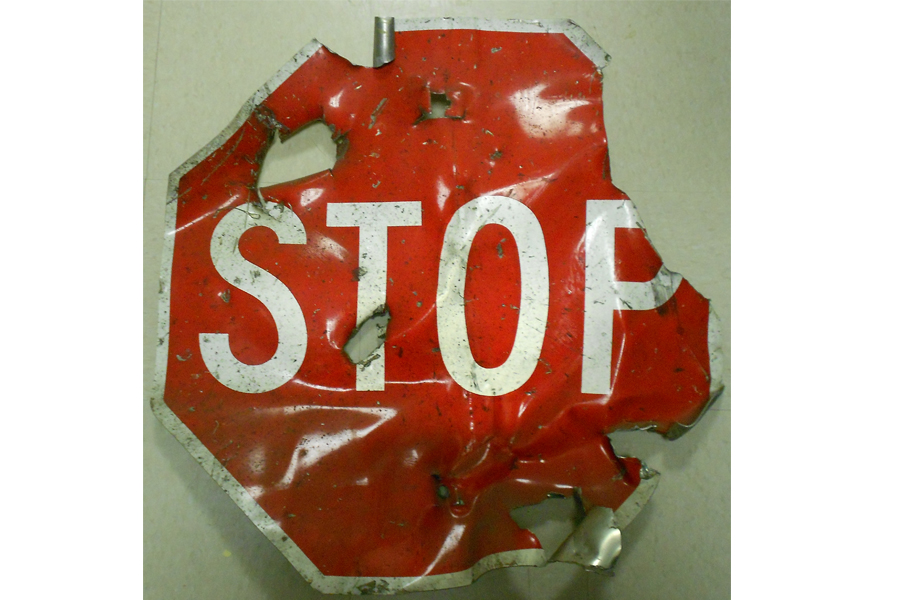Make a donation to the museum
Survivor Story: Remembering the 1993 Bombing
Survivor Story: Remembering the 1993 Bombing

It was approaching lunchtime on Feb. 26, 1993 when Jeannine Ali felt the earth shake from her office on the 45th floor of the North Tower. Acrid smoke soon began to pour through the office’s air vents. She corralled her teammates at Dean Witter and told the office controller, “You can stay if you want, but we are getting out!”
The group started down the emergency stairs unaware that a bomb had exploded in the parking garage at the B-2 level of the World Trade Center, directly below their building. The explosion killed six people and left a crater 150-feet wide and several stories deep.
Ali and her colleagues were among the 50,000 people who evacuated the World Trade Center that day. At about 1:30 p.m. after rolling power failures, the electricity was shut off and the towers went dark. Emergency generators, ventilation systems, public address systems and the elevators in both buildings become inoperable. The occupants of the towers were forced to navigate the smoke-filled stairwells in the dark.
“We wound up carrying someone down in a wheel chair, with a lock-of-wrists hold because the wheel chair just wasn’t working,” recalled PAPD Lt. Bill Keegan, who aided in the evacuation, in an oral history interview with the 9/11 Memorial Museum. “I guess we were up around 50-something [floors] when we took her down. And down we went.”
Jeannine remembers that she and her friend held each other and counted the stairs on each landing. “The stairwells were packed. And it was pitch black. Pitch black!” Once she and her team members had reached daylight on the street, she saw that everyone’s faces were black with soot. It was primarily the thick smoke that contributed to the more than 1,000 injuries that day. The towers wouldn’t be fully evacuated until after 5:30 p.m. that evening. By 7:00 p.m. Con Edison had restored power and the towers again sparkled.
It wasn’t until later that evening when Ali was on her way home that she called her husband on a payphone and he told her what happened. “To hear him say the words ‘terrorists’ and ‘bomb,’ my knees – my legs just went out completely from underneath me and I just collapsed in the Path Station.”
Eight years later, on Sept. 11. 2001 Ali would make that same journey down the emergency stairwell. This time the stairs were lit, the evacuation was orderly, and the sprinklers were working. Though the 2001 terrorist attack on the World Trade Center would claim thousands of lives, improvements made after the 1993 attack facilitated a more orderly evacuation and likely saved lives.
Listen to Jeannine Ali and other 1993 survivors tell their evacuation stories.
By Jenny Pachucki, Communications Content Strategist
Previous Post
Sean Rooney’s Last Goodbye

Sean Rooney and his wife Beverly Eckert met when they were 16 years old at a high school dance. They married and lived in an old Victorian house they restored in Stamford, Conn.
Next Post
Stop Signs Tell Story of 1993 WTC Bombing

On a snowy Friday in February 1993, amid reports of a transformer explosion at the World Trade Center, Cooper Union freshmen, Gregory Miller and Justin Spivey decided to investigate the scene themselves.